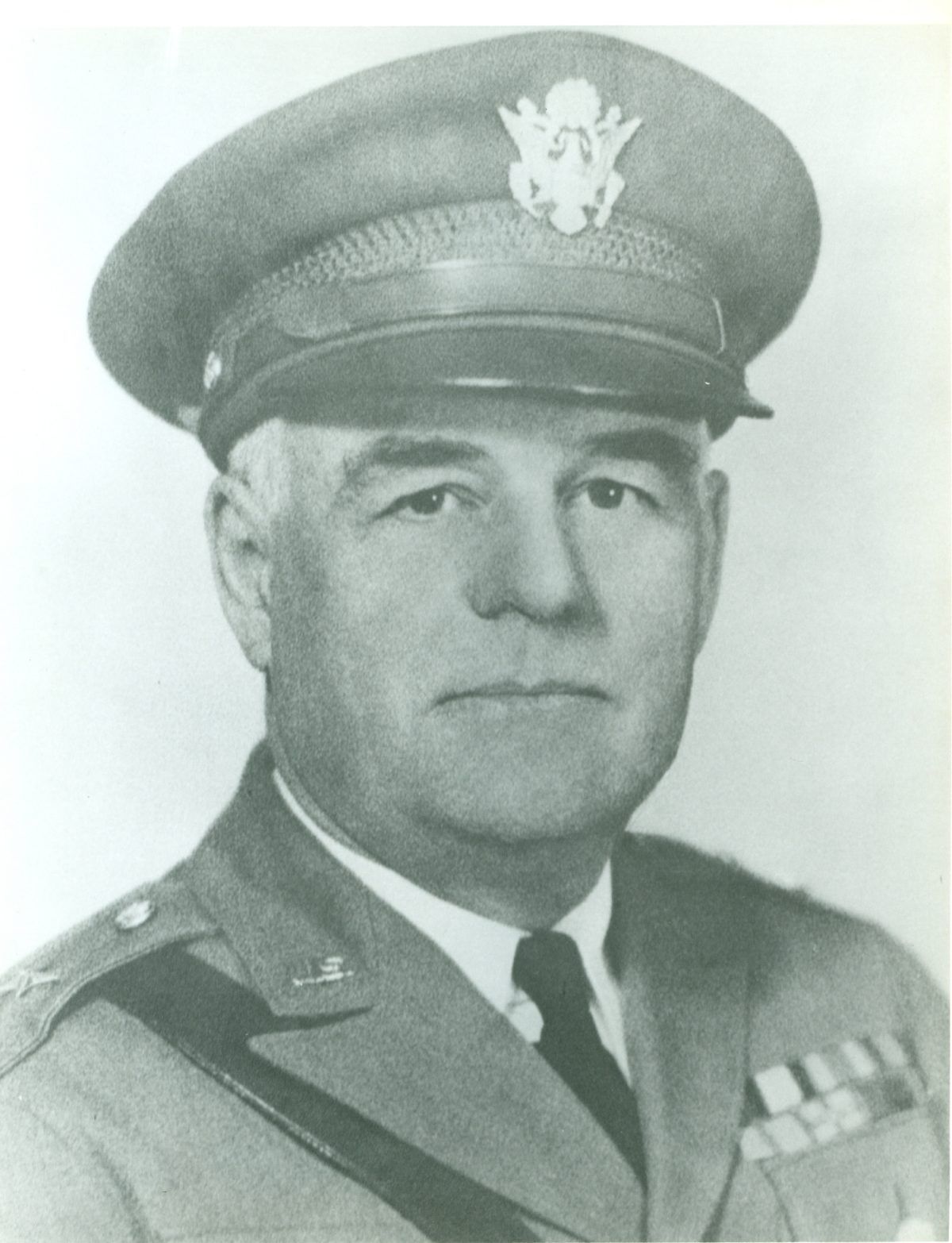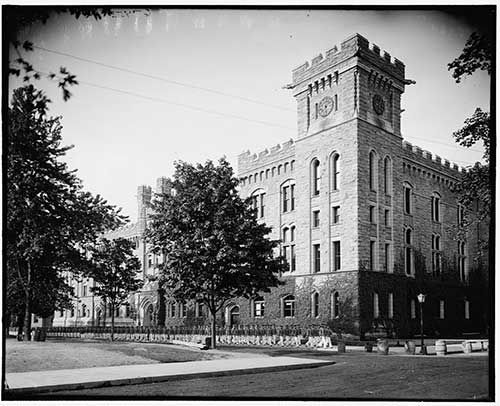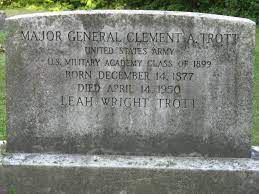Clement A. Trott




World War I
Biography
Clement August Trott was born on Dec. 14, 1877 in Milwaukee, Wisconsin to German immigrant parents. From an early age, his parents instilled their traditional German values with an emphasis on working hard, so Trott took up an early morning paper route over the summers, setting himself up for the regimented life of a military member. This mindset inspired him to take the entrance exams for the United States Military Academy in West Point, despite receiving a late appointment which left him with a short time period to prepare. At West Point, Trott was the youngest man in his class, which normally was a disadvantage, but he was determined to be successful and graduate, because he genuinely enjoyed life in the military. In 1899, he graduated from West Point and was given an appointment as Second Lieutenant of the Seventh Infantry Division for over a year, stationed at camps in Minnesota, Arizona, and Colorado.
In the early years of the 1900s and before the First World War, Clement A. Trott served in different camps across the country, but he found a niche in the classroom. For four years, he was an instructor with the Department of Law at West Point, teaching the next generation of military professionals. There, Trott was able to combine his dedication to the military and his love for baseball. He was never a capable athlete, but found an interest in the record keeping side of sports. In spite of having no playing experience, he was named graduate manager of the Military Academy’s Cadet baseball team, helping to catapult the team to the forefront of college baseball at the time. In addition to the years teaching at West Point, he served as an instructor of tactics at both Fort Leavenworth in Kansas and at the University of Illinois, still not seeing any actual battle.
When the United States first entered into World War I in 1917, Trott was still teaching at the University of Illinois, but was quickly transferred to Fort Sheridan in Illinois with the Fort’s Officers Training Camp. He served as a trainer there, and was promoted to Major of Infantry. Upon America’s entrance into the war, the trained standing Army of the United States was much reduced since the end of the Spanish-American War, leading Congress to pass the Selective Service Act. As a result, over four million men with no military experience were drafted into service, so training soldiers was crucial to the American war effort. Trott assisted in bringing the first waves of troops to fighting form until mid-August of 1917 when he was transferred to Camp Sherman in Ohio and promoted to Lieutenant-Colonel of Infantry with a division with the National Army. After a period of just over three months of preparation, Clement A. Trott was ordered to travel to France via England in order to observe the 21st Division of the British Army to facilitate a unified British and American war effort.
After his time with the British, Trott resumed his duties as an instructor at the Army General Staff College in Langres, France until late June 1918, helping to quickly churn out officers to lead the expanding Army. However, his services were needed elsewhere before the conclusion of the war. He served with the 83rd Division as Chief of Staff, but after a month received a promotion and a transfer. Trott was promoted to Colonel of Infantry and took charge of the 5th Division, the position he would hold until war’s end. Notably, his division served at the Saint-Mihiel salient defeating the German troops, as well as taking part in the Meuse-Argonne Offensive, during which the Hindenburg Line was finally broken enabling the armistice. With the armistice, American forces, including Clement A. Trott, were sent into Luxembourg to liberate the country from German rule and secure the country’s independence, a feat that was achieved with the signing of the Treaty of Versailles in late June 1919. Trott returned to America a few days later.
Following the war, Clement A. Trott received numerous honors for his valiant service during the relatively short American fighting in Europe. Of numerous awards bestowed upon him, Trott received the Silver Star for bravery in action and the French Legion of Honor, the highest French order of merit. However, he most notably received the Army Distinguished Service Medal, the citation reading: “The President of the United States of America, authorized by Act of Congress, July 9, 1918, takes pleasure in presenting the Army Distinguished Service Medal to Colonel (Infantry) Clement AugustTrott, United States Army, for exceptionally meritorious and distinguished services to the Government of the United States, in a duty of great responsibility during World War I. As Chief of Staff of the 5th Division, through his intimate knowledge of staff duties and the requirements of troops of the line, Colonel Trott organized a staff which insured efficient cooperation in combat. His ability was shown in sound tactical directions to his division, which insured successes in four offensive operations.” As a man who served and trained with such commitment and valor, Trott’s military career did not end with the First World War. He served once again as a trainer at various bases, and also was a regimental commander of civil projects, in particular of the construction of flood control works in New England with the Civilian Conservation Corps, a New Deal agency, in the first part of the 1930s. Following the project’s completion, Trott earned promotion to Brigadier General, and after six years of commanding multiple different regiments, he was promoted to the rank of Major General in 1941, 42 years after his graduation from West Point. That same year however, he retired from the Army because he could no longer keep up with his duties at the age of 64. Eight years after his retirement, Clement A. Trott, a brave German-American officer, died on April 14, 1950.
Written by Thomas Crain